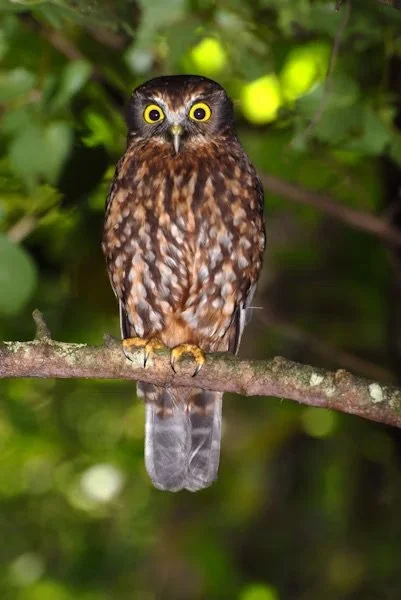Birdwatching on Waiheke Island
Waiheke Island: Not just for wine lovers
With its diverse ecosystems, from saltmarshes and estuaries to native forest and regenerating bush, Waiheke Island supports an impressive range of birdlife. Whether you're a passionate birder or simply love hearing birdsong with your morning coffee, the island offers many ways to connect with nature during your stay at Delamore Lodge.
Top Birdwatching Spots on Waiheke Island
Whakanewha Regional Park
This lush regional park is one of the best places on the island to spot native forest and wetland birds. You’re likely to see Tūī, Kererū, Pīwakawaka (fantails), Grey warblers, and if you're lucky, the shy Banded rail. It's also part of a conservation area helping restore local biodiversity.
Rangihoua Wetland Path
The Rangihoua Wetland Path is a notable wetland area on Waiheke Island, situated near Onetangi. This path offers a scenic walk-through diverse ecosystems, including wetlands and native bush, and is known for its birdwatching opportunities. Bird species such as Pūkeko, Sacred kingfishers (Kōtare), and occasionally the elusive Australasian bittern can be observed here.
Matiatia Bay and Oneroa Headland
Close to the ferry terminal and just a short drive from Delamore Lodge, this area attracts variable Oystercatchers, Pied shags, White-faced herons, and Black backed gulls. These species are commonly seen from walking tracks along the headland or while enjoying a seaside stroll around Matiatia Bay.
Sacred Kingfisher - https://www.nzbirdsonline.org.nz/species/sacred-kingfisher
Te Korowai o Waiheke Restoration Sites
Waiheke’s ambitious predator-free restoration project is enhancing bird habitats across the island, especially in areas around Te Matuku and Awaawaroa wetlands.
Notable Birds to Spot
These are some of the birds you might encounter, as per the Waiheke eBird Hotspot List:
Tūī — Vocal, iridescent birds often seen sipping nectar or heard mimicking other bird calls.
Kererū (Wood pigeon) — Large, gliding birds with a striking green-and-white plumage.
Pīwakawaka (Fantail) — These cheeky little birds flit around walkers in search of insects.
Ruru (Morepork) — New Zealand’s only native owl, usually heard at night near bushy areas.
Kākā — A forest parrot occasionally spotted near Whakanewha.
Australasian Bittern — Rare and shy, sometimes heard booming in the Onetangi Wetlands.
Sacred Kingfisher (Kōtare) — Perched motionless before diving for prey.
Pūkeko — Common in wetlands, easily spotted by their bright red beaks and blue plumage.
Oystercatchers and Pied Stilts — Frequent coastal visitors.
Morepork (Ruru) - They’re nocturnal native owls, commonly heard more than seen. Their distinctive "more-pork" call often echoes through bushy areas in the evening.
Best Times to Go Birdwatching
Bird activity peaks in the early morning and again around dusk. Spring (September to November) is especially rewarding, with more vocalisation and nesting behaviour on display. Bring binoculars, comfortable walking shoes, and your camera, and move quietly to get the best sightings.
Support Conservation While You Explore
Waiheke’s birdlife is flourishing thanks to the tireless work of groups like Te Korowai o Waiheke. Consider supporting their efforts by donating, volunteering, or simply sticking to designated walking tracks to avoid disturbing habitats.
Experience Nature in Luxury
Back at Delamore Lodge, enjoy a glass of wine on your private terrace while listening to the evening call of the Ruru, or spot a Tūī darting through the trees around the infinity pool. Blending luxury with natural beauty, your stay offers a front-row seat to Waiheke’s avian wonders, no binoculars required.




